The Appalachian Trail is one of the most famous hiking trails on the planet. In fact, it currently holds the record as the longest hiking-only trail in the world. Only 22,000 people have ever hiked the entire trail, with about 750-1000 new hikers being added each year. One of the most beautiful and well-traveled portions of the trail is through the state of North Carolina. Today, we will learn some interesting facts about the section of the AT (Appalachian Trail) specifically located in North Carolina. Let’s discover 10 facts you didn’t know about the Appalachian Trail in North Carolina!
Appalachian Trail in North Carolina: 10 Facts You Didn’t Know
1. There are 96.4 miles of the AT in the state
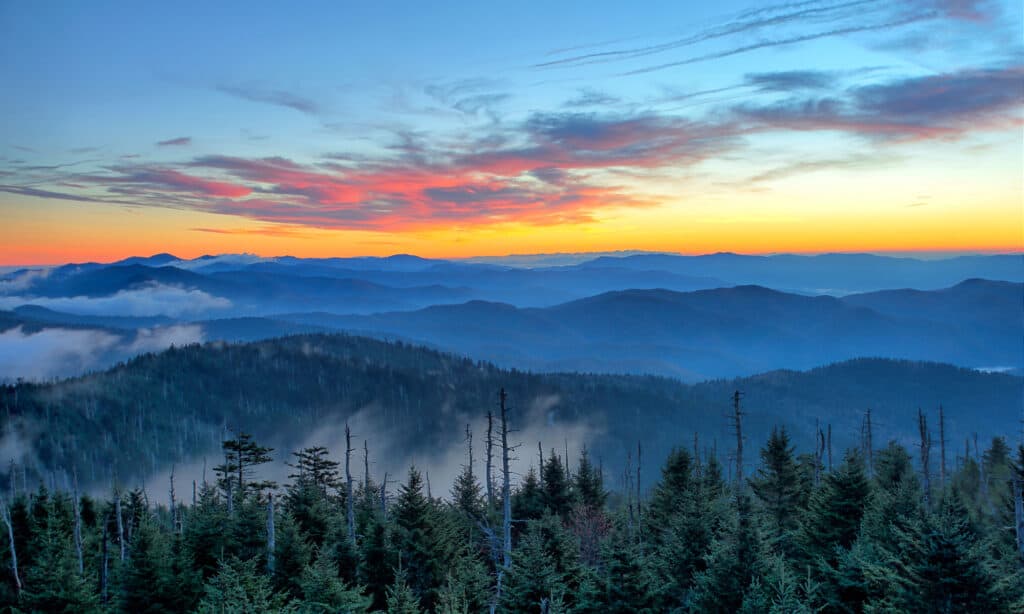
North Carolina is home to 96.4 miles of the 2,000+ miles of the Appalachian Trail.
©Trent Carmichael/Shutterstock.com
The entire Appalachian Trail is listed as 2,190+ miles and spans from Georgia to Maine. Part of the trail travels through North Carolina, directly after Georgia (if you are heading north). The North Carolina-exclusive section of the AT is listed as 96.4 miles, although a larger portion shares a border with Tenessee.
2. The elevation change is between 1725-5498 feet
The average elevation change that a hiker experiences while heading through the North Carolina section of the AT is between 1,725 and 5,498 feet. For anyone looking to get a workout, the NC section of the AT is a real burner!
3. The trail varies between 1-7 on the difficulty scale through the state
There are many scales that hikers use to list the difficulty of certain trails and hikes. The Appalachian Trail Conservancy lists the NC section of the AT as being between 1 and 7. Although the difficulty scale listed on their website isn’t quite clear, it is assumed that 10 is the hardest. With that in mind, the North Carolina portion of the trail is easily among the most difficult, with parts of Maine likely taking the top spot.
4. There are 217.8 miles along the NC/TN border
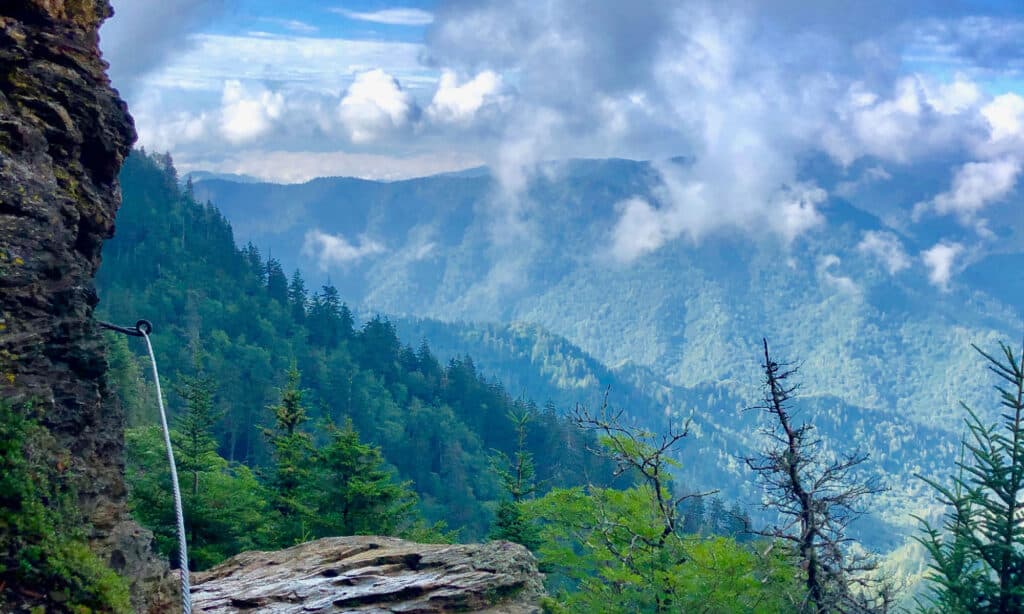
The Appalachian Trail straddles the NC/TN border most of the way north.
©Sara Parlier/Shutterstock.com
Although there are only 96.4 miles of trail exclusively in North Carolina, most of the state’s trail shares a border with Tennessee. The entire length of the trail along the NC/TN border is roughly 217.8 miles and often meanders between the state lines every little while.
5. The highest part of the AT is in North Carolina

Clingman’s Dome is the highest point on the entire Appalachian Trail.
©iStock.com/Sam Fowler
The highest portion of the AT is located in North Carolina. Clingman’s Dome, as it is called, is located in the Great Smoky Mountains near the border of North Carolina and Tennessee. It’s the highest point in the state of Tennessee, the highest point along the trail, and the third-highest point on mainland eastern North America. Clingman’s Dome elevation is listed at an incredible 6,643 feet high.
6. Bly Gap is the first time the trail crosses into North Carolina
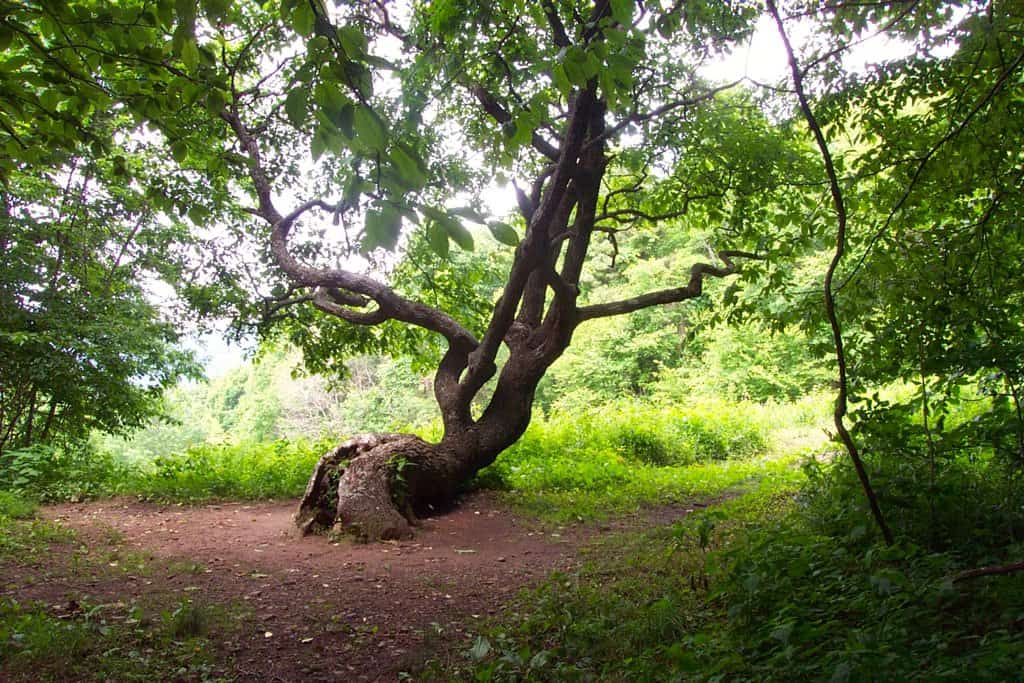
Bly Gap is known for its single gnarled oak that welcomes people into North Carolina.
©John Hayes / flickr – License
The first place that the AT crosses into North Carolina is known as Bly Gap. Bly Gap is located right on the North Carolina-Georgia border in the Nantahala Wilderness. The location has a famous landmark – a gnarled oak tree that stands alone to invite people north to the rest of the trail!
7. North Carolina is the second state the trail passes through

North Carolina is the second state that the AT crosses.
©digidreamgrafix/Shutterstock.com
The AT begins in Georgia at Springer Mountain. Only a few days later, however, hikers are soon crossing into North Carolina. Of the 14 states that the trail passes through, North Carolina is the second. The final state that the AT ends in is Maine.
8. The AT travels directly through the town of Hot Springs
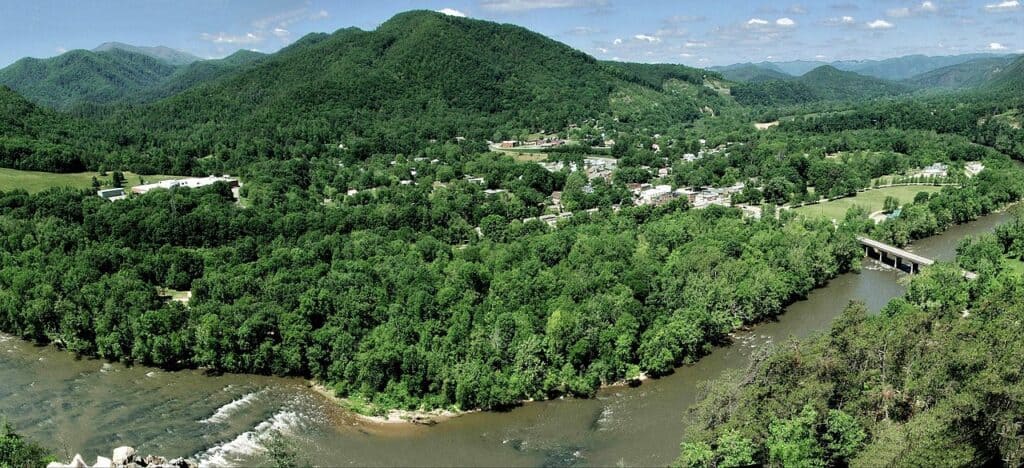
Hot Springs, North Carolina, is the only town that the AT directly crosses through.
©Hot Springs Tourism & Welcome Center / Creative Commons – License
Across the trail, there are tons of different landmarks. One of the most unique, however, is Hot Springs, North Carolina. Hot Springs is the only town on the entire trail that is directly crossed by the AT. Other towns could be nearby, but the AT cuts directly through the small town.
9. It takes 6-7 days to get through the North Carolina portion of the AT
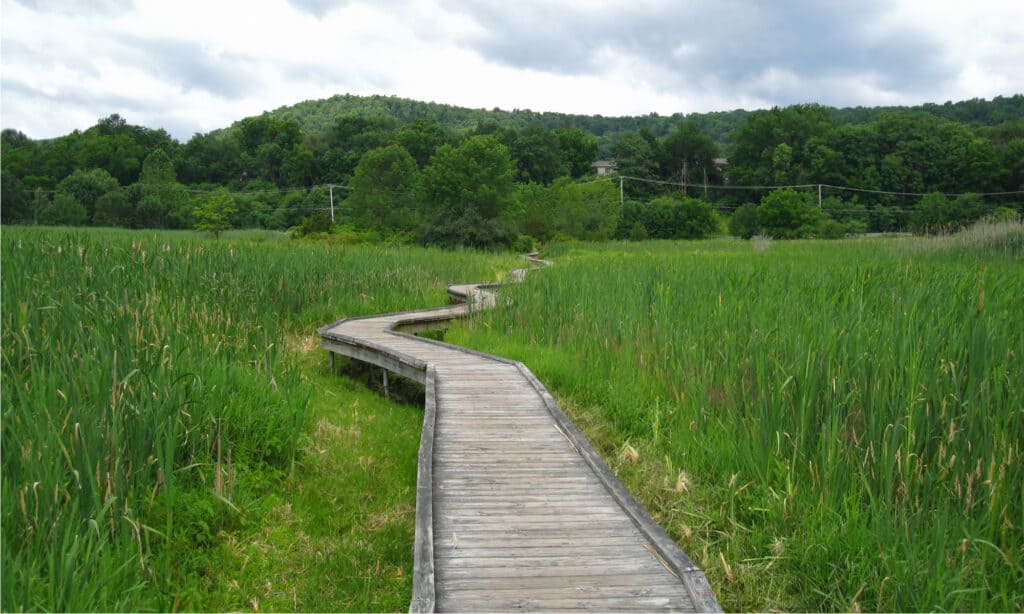
The North Carolina portion of the trail generally takes about a week to travel.
©drewthehobbit/Shutterstock.com
Each state has an estimated time that it takes to traverse its portion of the trail. Entering just north of Georgia and ending in Virginia, the North Carolina portion of the AT takes between 6-7 days to traverse, although it could take longer if you decide to hang out!
10. The AT travels through the largest section of old-growth forest in North Carolina
North Carolina is home to some of the most diverse landscapes and animals of any section of the trail. Old-growth forests dot the landscapes, and the trail passes through some of the largest portions of these ancient relics. As their name suggests, old-growth forests are forests as they were before humans began logging or building in the area. As such, they are distinct ecologically. North Carolina is home to some of the largest old-growth forests in the eastern United States.
The photo featured at the top of this post is © EWY Media/Shutterstock.com
Thank you for reading! Have some feedback for us? Contact the AZ Animals editorial team.






